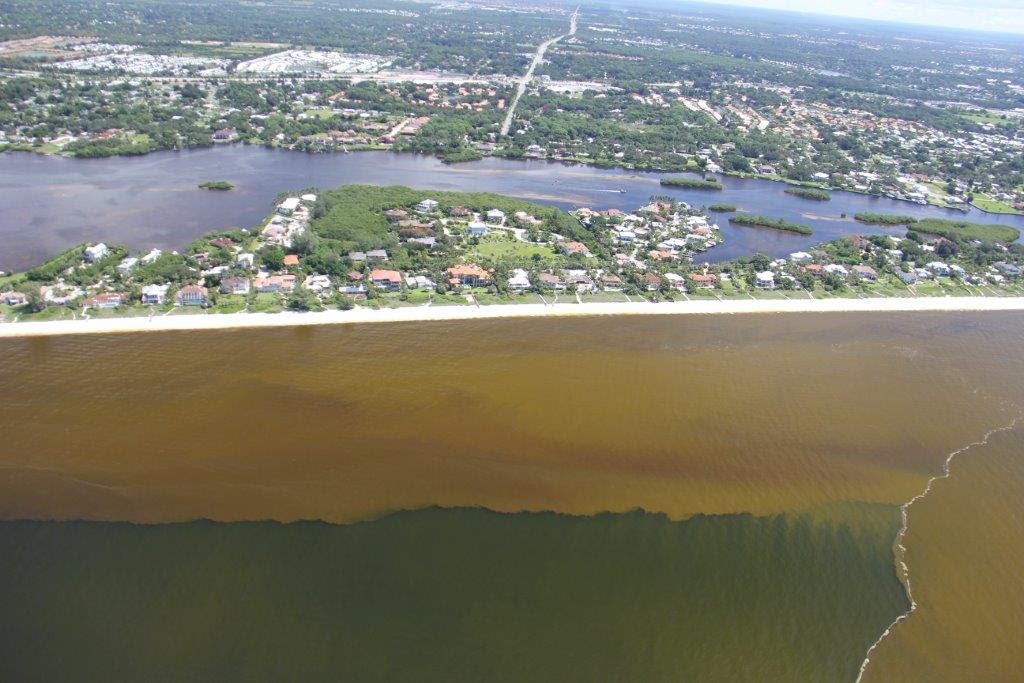A bloom of the red tide organism, Karenia brevis, persists on the Florida Gulf Coast and in Lower Tampa Bay. Conditions remain improved in other areas of Tampa Bay relative to prior weeks. Over the past week, K. brevis was detected in 103 samples. Bloom concentrations (>100,000 cells/liter) were observed in 70 samples: seven from Pasco County, 24 from Pinellas County, six from Manatee County, 27 from Sarasota County, four from Charlotte County, and 2 from Lee County. Additional details are provided below.
- In Southwest Florida over the past week, K. brevis was observed at background to high concentrations in and offshore of Pinellas County, low to high concentrations in Manatee County, low to high concentrations in Sarasota County, medium to high concentrations in Charlotte County, background to medium concentrations in and offshore of Lee County, and background to very low concentrations in Collier County.
- In Northwest Florida over the past week, K. brevis was observed at background concentrations offshore of Levy County, low concentrations offshore of Citrus County, very low to low concentrations offshore of Hernando County, and background to medium concentrations in and offshore of Pasco County.
- Along the Florida East Coast over the past week, K. brevis was not observed.
On Florida’s Gulf Coast, fish kills suspected to be related to red tide were reported in Hernando, Pasco, Pinellas, Hillsborough, Manatee, Sarasota, Charlotte, Lee, and Collier counties over the past week. For more details, please visit: https://myfwc.com/research/saltwater/health/fish-kills-hotline/.
Respiratory irritation suspected to be related to red tide was reported over the past week on Florida’s Gulf Coast in Pasco, Pinellas, Manatee, Sarasota, and Lee counties. Additional details are provided in the Southwest Coast and Northwest Coast reports and for current information, please visit: https://visitbeaches.org/.
Forecasts by the USF-FWC Collaboration for Prediction of Red Tides for Pinellas to northern Monroe counties predict south-southeastern movement of surface and subsurface waters in most areas over the next 3.5 days.
FWC-FWRI is working closely with the Florida Department of Environmental Protection (FDEP) and other partners on the Piney Point response effort. Status updates and results are posted on the Protecting Florida Together website (https://protectingfloridatogether.gov/PineyPointUpdate) and on the Tampa Bay Estuary Program website (https://shiny.tbep.org/piney-point/).
The next complete status report will be issued on Friday, August 6th. Please check our daily sampling map, which can be accessed via the online status report on our Red Tide Current Status page. For more information on algal blooms and water quality, please visit Protecting Florida Together.
This information, including maps and reports with additional details, is also available on the FWRI Red Tide website. The website also provides links to additional information related to the topic of Florida red tide including satellite imagery, experimental red tide forecasts, shellfish harvesting areas, the FWC Fish Kill Hotline, the Florida Poison Information Center (to report human health effects related to exposure to red tide), and other wildlife related hotlines.
To learn more about various organisms that have been known to cause algal blooms in Florida waters, see the FWRI Red Tide Flickr page. Archived status maps can also be found on Flickr.
The FWRI HAB group in conjunction with Mote Marine Laboratory now have a facebook page. Please like our page and learn interesting facts concerning red tide and other harmful algal blooms in Florida.

